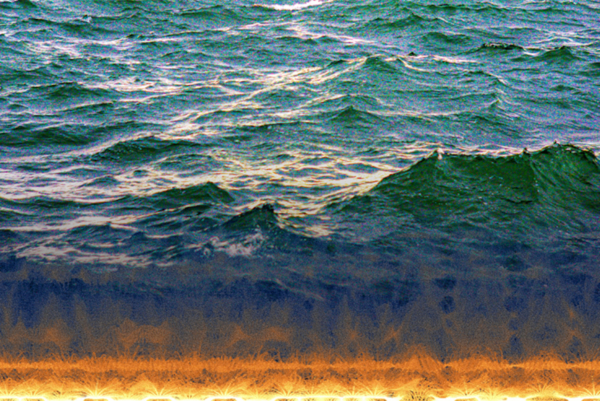
ÉCOFEMMES FEST – MINERVA
L’association MINERVA présentera ÉCOFEMMES FEST, le premier festival en France consacré à l’écoféminisme. Pendant trois jours, artistes, chercheuses, journalistes et…
![[macro]biologies II: organisms – Exposition au Art Laboratory de Berlin](https://ressource0.fr/uploads/2014/06/Capture-decran-2014-06-05-a-17.38.391.png)
Crédit image : Brandon Ballengée. DFA 186: Hades. 2012. Unique digital-C print on watercolor paper. Cleared and stained Pacific tree frog collected in Aptos, California in scientific collaboration with Stanley K. Sessions. 46 x 34 in. Courtesy the artist and Ronald Feldman Fine Arts, New York, NY.
Exhibition at Art Laboratory Berlin
Suzanne Anker, Brandon Ballengée, Maja Smrekar
31 May- 20 July, 2014
The second exhibition of the series [macro]biologies & [micro]biologies, [macro]biologies II: organisms will highlight the works of artists dealing with multi-celled organisms. Noteworthy is both the relationship of these organisms to us, as well as their roles as independent actors. The exhibition focuses on the works of three remarkable, internationally recognized artists whose work deals with multicellular organisms: Suzanne Anker (US), Brandon Ballengée (US) and Maja Smrekar (SI).
Suzanne Anker
The American artist and theoretician Suzanne Anker has been one of the key figures working at the border between art and biology for several decades. Her work combines inquiry into science and the newest technologies with a keen aesthetic sense.
At Art Laboratory Berlin Anker will show several series of works: The installation Astroculture (Shelf Life)was first shown in 2009. It consists of three plant chambers with installed LED panels. Surprisingly, although the grown plants appeared to be fuschia-colored, they in fact were green. The work manifests the possibility of growing herbs in any light deprived apartment.
Remote Sensing is a series of work produced through rapid prototyping technology. The three dimensional working software program converts the image into an object. The resultant sculpture shares resonance with pictorial maps and landscapes employed by remote sensing.
In the series Vanitas (in a Petri dish) Suzanne Anker reflects the concept of Vanitas by employing a Petri dish as the site of laboratory life in which the Petri dish changes from an object of science to an object saturated as art.
More information: www.suzanneanker.com
Brandon Ballengée
The American artist Brandon Ballengée pursues a sustainable form of artistic research in his metier as a visual artist in the field of bioart and as a biologist in the field of herpetology.
Art Laboratory Berlin will show video documentation of his ongoing project Malamp Reliquaries, on which Ballengée has worked in various forms since 2001. The project’s aim is to investigate the potentially unnaturally high occurrence of morphological deformities among wild amphibian populations.
The exhibition also presents two other works of Ballengée developed in the course of his artistic and scientific research: the video projection Requiem pour Flocon de Neige Blesses (A Requiem for Injured Snowflakes) and the video installation The Cry of Silent Forms made up of eight monitors of different sizes arranged horizontally on the floor.
More information: brandonballengee.com
Maja Smrekar
Maja Smrekar is an emerging young artist from Ljubljana, Slovenia, connecting the intersections of humanities and natural sciences with her main interest in the concept of life.
In 2012, working together with researchers from the Department for Freshwater and Land Ecosystems at the National Institute of Biology in Ljubljana/Slovenia, Smrekar built the installation Crustacea deleatur (an Aksioma Production). This project explores the problem of invasive species, for instance the interaction of European (indigenous) and non-European (tropical, invasive) crayfish. An architectural housing contained a two part aquarium, one part containing the local Slovene crayfish, the other – the Australian red claw crayfish (Cherax quadricarinatus) which recently has settled in the thermal Lake Topla in Slovenia and multiplied in great numbers. The two parts were connected by a ladder allowing the crustaceans the possibility of crossing over and confronting each other.
For the exhibition at Art Laboratory Berlin Smrekar has continued to develop this project and will present the installation Crustacea deleatur in a different form as BioBase: risky ZOOgraphies focussing on the marble crayfish (Procambarus fallax forma virginalis), and its form of asexual reproduction in which growth and development of embryos occur without fertilization, called parthenogenesis. Since the spring of 2013, in this context, there has been an intensive exchange between Smrekar and Prof. Dr. Scholtz from the Institute of Biology (Humboldt-Universität zu Berlin), one of the leading specialists in the marble crayfish worldwide.
More information:
www.biobase.si
majasmrekar.org
crustaceadeleatur.wordpress.com
Curated by Regine Rapp Christian de Lutz
L’association MINERVA présentera ÉCOFEMMES FEST, le premier festival en France consacré à l’écoféminisme. Pendant trois jours, artistes, chercheuses, journalistes et…
L’Observatoire de la Côte d’Azur accueille Unda Terræ, une exposition collective art/science imaginée par Circa dans le cadre de la…
L’exposition Enredos II de Nuno da Luz dans laquelle le Centro Botín (Espagne) devient un corps acoustique vibrant à travers…

